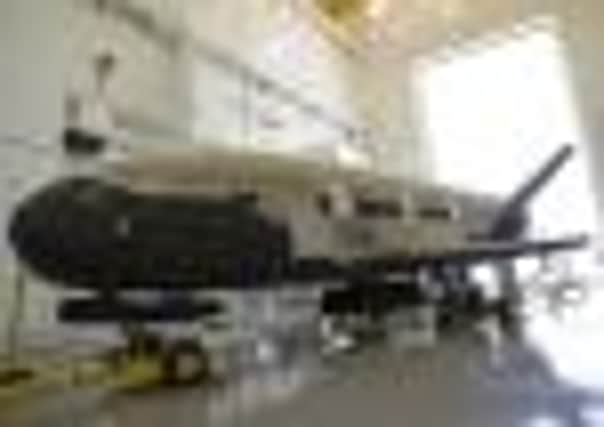US unmanned plane orbits planet for 15 months – but it’s a secret why


The miniature space plane, also known as Orbital Test Vehicle-2, or OTV-2, touched down at California’s Vandenberg Air Force Base, 130 miles north-west of Los Angeles on Saturday.
“With the retirement of the space shuttle fleet, the X-37B OTV program brings a singular capability to space technology development,” said Lieutenant Colonel Tom McIntyre, X-37B programme manager. “The return capability allows the Air Force to test new technologies without the same risk commitment faced by other programmes.”
Advertisement
Hide AdAdvertisement
Hide AdThe US military’s first X-37B debuted in 2010 and autonomously landed at Vandenberg after 224 days in space. The former Soviet Union’s Buran space shuttle, which made a single spaceflight in 1988, was the first ship to make an autonomous landing from orbit.
With the second X-37B on the ground, the US Air Force plans to launch the first one again later this year. An exact date has not been set.
The twin X-37B vehicles are part of a military programme testing robotically controlled reusable spacecraft technologies. Though the US military has emphasised the goal is to test the space plane itself, there’s a classified payload on board – a detail that has led to much speculation about the mission’s ultimate purpose.
Some amateur trackers think the craft carried an experimental spy satellite sensor judging by its low orbit and inclination, suggesting reconnaissance or intelligence gathering rather than communications.
Harvard astrophysicist Jonathan McDowell, who runs Jonathan’s Space Report, which tracks the world’s space launches and satellites, said it’s possible it was testing some form of new imaging.
The latest X-37B was boosted into orbit atop an Atlas 5 rocket. It was designed to stay aloft for nine months, but the air force wanted to test its endurance. After determining the space plane was performing well, the military decided in December to extend the mission.
Little has been said publicly about the second X-37B flight and operations. At a budget hearing before the Senate armed services sub-committee in March, William Shelton, head of the Air Force Space Command, made a passing mention.
That the second X-37B has stayed longer in space than the first shows “the flexibility of this unique system,” he said.
Advertisement
Hide AdAdvertisement
Hide AdJoan Johnson-Freese, professor of national security affairs at the US Naval War College, said such a craft could give “eyes” over conflict regions faster than a satellite. “Having a vehicle with a broad range of capabilities that can get into space quickly is a very good thing,” she said.
Built by Boeing’s Phantom Works, the space plane stands 9½ feet tall and is just over 29 feet long, with a wingspan of less than 15 feet. It possesses two angled tail fins rather than a single vertical stabiliser. Once in orbit, it has solar panels that unfurl to charge batteries for power.